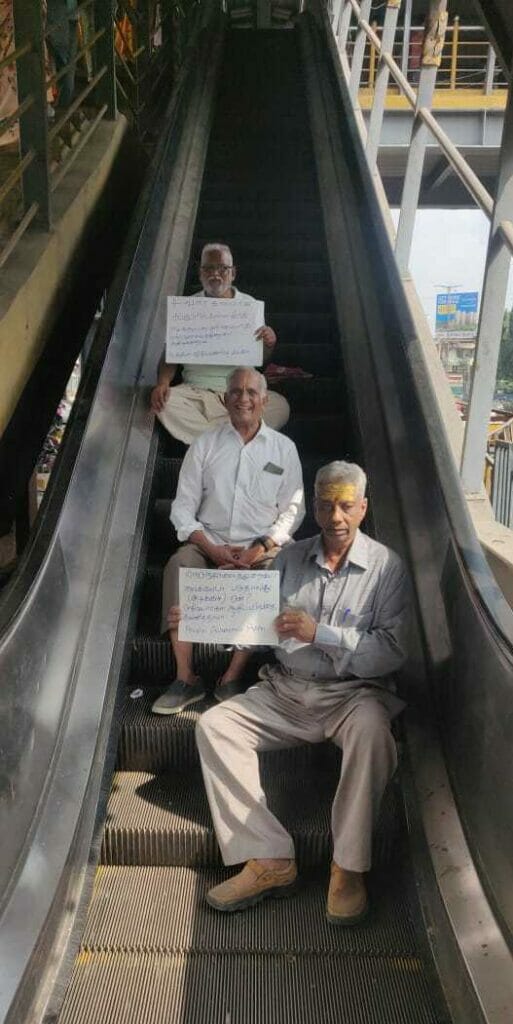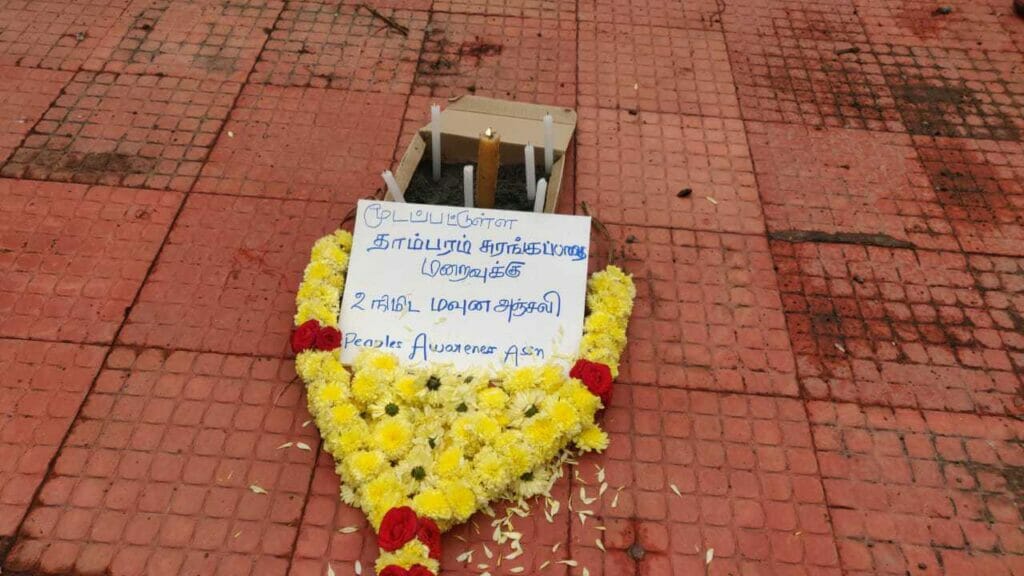A famous colloquialism in Tamil about the need for protests translates roughly to say only a baby who cries gets the milk. In my many years of civic activism in Chennai and its suburbs, I have come to realise that constant vigilance and readiness to speak up for our needs are key tenets to achieving our objectives to improve the city and quality of life in the city. While much has changed, what remains constant is the need to raise our voices collectively to demand better from the powers that be.
Protests alone will not fix issues we face in the city but can be a powerful tool to draw attention to an issue and enable more residents to become aware and informed. They have also served as an avenue to gain the attention of the media and take the issue to the relevant authorities who can solve it effectively.
I have attempted to distil some key takeaways from the methods I’ve adopted over the years.
Read more: Why citizen engagement will be vital for the success of Chennai as a smart city
Initial brushes with civic activism
In 1965, I bought a piece of land at Chromepet. Not long after, it came to my notice that the land was set to be acquired by the government along with nearby plots.
Determined to get the land back, I wrote 14 letters to the then Chief Minister Annadurai, requesting exemption of my land from acquisition. I managed to secure a brief audience with the CM to raise my grievance and was informed that the plots earmarked for acquisition were released. Encouraged by the response I received on this issue from the government, I started writing a spate of petitions on various issues affecting the public.
In 1968, I moved to Chromepet. On relocation, I realised that the locality did not have any basic civic amenities. Residents in the area battled to secure an EB connection for over three months before the board finally relented and brought old poles from Vandalur to set up connections in the area.
The experience I gained as a union secretary at my day job helped me write petitions to various government departments demanding not only new facilities but also the repair of defective civic amenities.
Moving beyond petitions to solve civic issues in Chennai
While some departments and authorities were responsive to petitions, their effectiveness was not always felt on the ground. When the change was slow and the petitions were not recognised, it was time to adopt other strategies to bring attention to issues.
The Readers’ Mail and Letters to the Editors columns in popular newspapers were the next avenues through which we highlighted many civic issues across the city. When petitions failed to draw attention, I wrote in to all major dailies outlining the problems faced by residents due to inaction or apathy. This garnered quick results. It is a practice that I continue to an extent even to this date. Both English and vernacular dailies have carried these letters and it has yielded positive results.
Civic activism is also not the domain of a lone individual. Collective strength has a huge role in arriving at solutions. In our locality, we have worked collectively through resident welfare associations to raise various issues that affect the public. We have been able to draw on the experience, time and expertise of various interested persons who are part of the RWAs to get better results. There is always strength in numbers and more often than not, the civic issues we face in daily life affect us all to varying degrees.
Read more: Why road milling work calls for active involvement of Chennai citizens
Novel protests spotlight civic issues in Chennai
When petitions and routine protests fail to bring results or draw the attention of the government, novel protests came to our aid. Ordinary agitations, public meetings and distribution of posters or handbills did not bring results. The media too shies away from covering such incidents extensively.
But in this age where attention is currency, the novelty of protests has been of great help in spotlighting civic issues. When a dog bites a man, it is not news. But if a man bites a dog, it becomes breaking news.
Novel protests have also had the effect of shaming the government and authorities into swinging into action to solve the issues.
Some such protests that have achieved the intended results have made a variety of agencies act immediately due to the attention they received from the media and the general public.
When a building material supplier dumped loads of sand on the road margins during loading and unloading on highways, it posed danger to motorists. I decided to highlight this issue by performing a burial ritual in the area and laying a wreath with the slogan “Here lies the Highways Department”. The evening news covered this protest and the Highways Department took cognizance of the issue and banned the practice.
When the Chromepet government hospital ran short of bandages, members of our resident welfare association called for action by wrapping ourselves up with cloth covered in red ink. This issue was reported on extensively and the hospital was subsequently supplied with the necessary materials.
When there have been potholes and water stagnation along GST, the RWAs again swung into action and staged a protest where we used fishing rods and nets to signify the poor state of the roads. This forced the departments concerned into fixing the potholes and taking measures to prevent the stagnation of water.
When the construction of the MIT bridge stalled for two years due to court proceedings and saw no progress, citizens affected by the delay decided to stage a protest. We brought a buffalo to the site of the bridge and a birthday cake was cut and offered to the buffalo. We also held placards. The judge saw the news of the protest and passed orders for compensation for the land owners and for the construction to resume.
Recently, RWA members and civic activists went to a subway in Tambaram that has been shut for five years and held a meeting to offer our condolences and mourn the death of the subway.
Civic participation the need of the hour in Chennai
With social media and more tools at our disposal, there is no excuse for citizens to be passive observers. Even those who cannot protest on the ground or hit the streets or sit in a fast can still play a role and make their concerns heard. Understanding the nature of the media, establishing a rapport with officials, engaging in constant and civil dialogue with the government and mobilising residents and other collectives are effective ways to achieve our shared objectives.
Only when residents are proactive and take an interest in their surroundings and the city can living conditions and civic amenities see improvement. In the past five decades of protest, it is to be noted that patience and perseverance always pay off.


Very nicely written article.
Excellent. Government and Officials cannot escape from the real issues affecting the common man. I am also joining with the NNRWA a resident association in Perumbakkam village and some of our demands were accepted and our demands were undertaken by the concerned authorities. KOODI VAAZHNTHAAL KODI NANMAI enghira muthumozhi eppothume poovathillai.